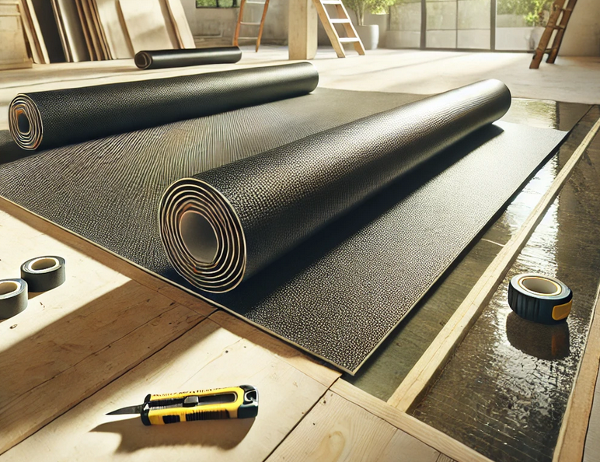Blog > The Unsung Hero of Floating Floors: All About Plastic Underlayment
The Unsung Hero of Floating Floors: All About Plastic Underlayment
Monday, December 9, 2024

When installing floating floors, one of the most critical yet overlooked components is the plastic underlayment. Often hidden and forgotten once the floor is complete, this thin layer plays a significant role in the longevity, performance, and comfort of your new flooring. But why is it so important.
Underlayment is a thin layer of material placed between the subfloor and the floating floorboards. For floating floors—such as laminate, vinyl, and engineered hardwood—plastic underlayment often comes in the form of polyethylene sheets or foam pads with a plastic moisture barrier.
The term "floating floor" refers to a flooring system that doesn't attach directly to the subfloor but instead "floats" above it. This design requires a stable and protective base, and the underlayment serves as a vital intermediary layer.
Why Is Plastic Underlayment Necessary?
Moisture Protection
Floating floors are particularly sensitive to moisture, which can cause warping, swelling, and other damage. Plastic underlayment with a vapor barrier prevents moisture from seeping up from the subfloor, especially in spaces like basements or over concrete slabs.
Sound Absorption
Floating floors can be noisy without proper sound insulation. Underlayment dampens sound, reducing hollow noises when you walk across the surface and improving overall acoustics.
Comfort and Cushioning
The underlayment provides a slight cushion, enhancing the comfort of the floor underfoot. This is especially important in homes with high traffic or in areas where people stand for extended periods.
Thermal Insulation
Some plastic underlayments also offer insulation properties, helping to maintain a consistent temperature in the room and making the floor feel warmer.
Subfloor Imperfection Management
Subfloors are rarely perfectly even. The underlayment compensates for minor imperfections, ensuring a smoother installation and preventing long-term issues with floor alignment.
What are the Various Types of Plastic Underlayment
Standard Polyethylene Sheet
This basic plastic sheeting acts as a vapor barrier. It is commonly used for laminate and engineered wood floors, especially over concrete.
Foam with Plastic Vapor Barrier
Combining foam padding with a built-in moisture barrier, this type is ideal for providing both cushioning and moisture protection.
Premium Multi-Layer Underlayments
These advanced products often include foam, plastic, and even aluminum layers for added benefits such as noise reduction, thermal insulation, and enhanced durability.
The type of subfloor, type of flooring, room conditions and noise reduction needs are all factors in helping decide which type of underlayment is ideal for your floors. A flooring expert like Jason’s Carpet and Tile will be able to property advise what is best for your home or office.
While it may seem like just a hidden layer, plastic underlayment is a cornerstone of a successful floating floor installation. By protecting against moisture, reducing noise, and adding comfort, this “unsung hero” ensures your floor performs beautifully for years to come. For more information and any questions on underlayment call 954-231-4487.
